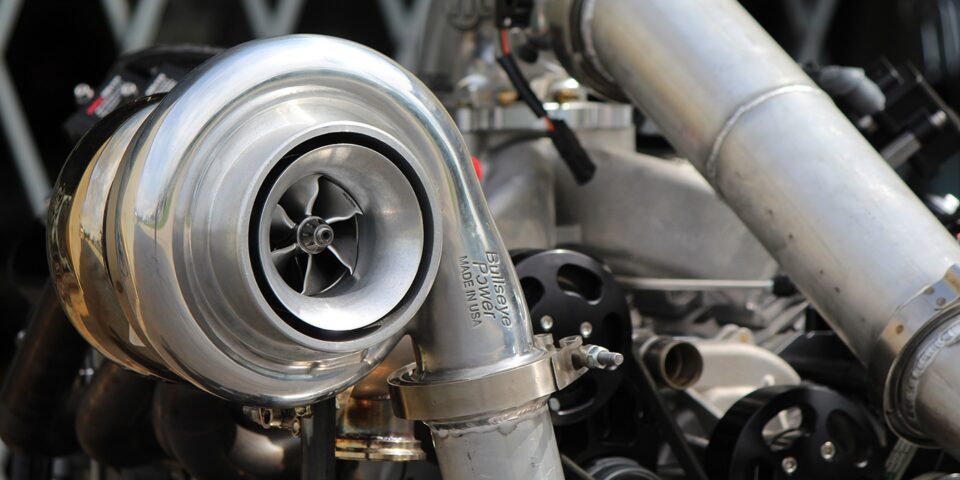How Cooler Intake Air through Intercoolers Raises Diesel Torque
Lower intake air temperatures increase air density inside a turbo diesel engine. Denser air holds more oxygen, leading to cleaner and more complete combustion. This improves power output and increases torque, which helps the engine perform better under load.
During sustained towing or heavy use, intake temperatures can spike. High heat can lead to “heat soak,” where the system retains warmth, and intake temperatures keep climbing. This reduces power, increases exhaust gas temperature (EGT), and stresses engine components.
Large-capacity intercoolers help control intake air temperatures, especially for tuned or high-output diesels. High-performing intercoolers prevent heat soak, maintain consistent torque, and protect the engine during demanding conditions.
Specifying Intercooling Solutions for Consistent High-Load Performance
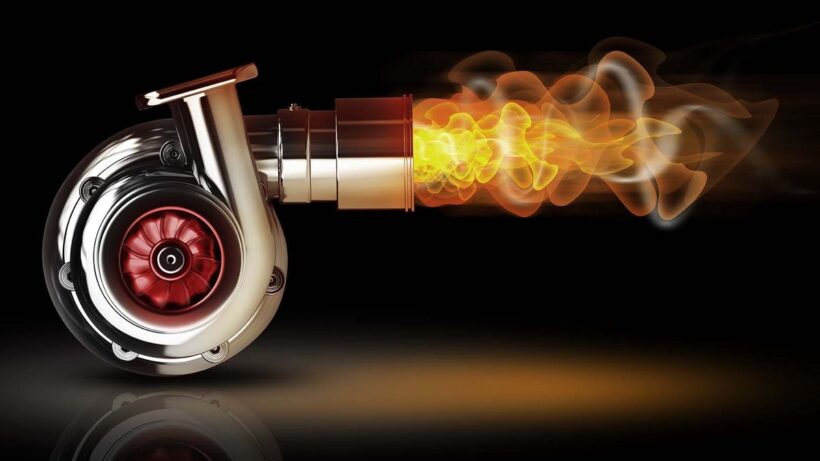
Air-to-air and air-to-water intercoolers serve different needs. Air-to-air units cool charge air through exposure to outside air. They offer simple plumbing and low maintenance. Air-to-water designs use coolant to absorb heat, then release it through a separate heat exchanger. Air-to-water systems often cool better in short bursts but add weight and complexity.
Key selection criteria include:
- Core volume: Bigger cores handle more airflow and offer better heat transfer.
- Frontal area: A larger face lets more air flow across the cooler.
- Fin density: Denser fins increase surface area but may raise pressure drop.
- Pressure drop: Less resistance across the core preserves boost pressure.
Proven options like the Banks intercooler deliver high flow and excellent cooling for trucks running big power or pulling heavy loads. Matching intercooler size to horsepower and use ensures consistent performance, preventing temperature spikes even during tough hauls.
Key Charge-Air Cooler Designs for Peak Heat Transfer
Intercooler cores come in two main types: bar-and-plate and tube-and-fin.
| Feature | Bar-and-Plate | Tube-and-Fin |
| Strength | High (handles more boost) | Moderate |
| Heat Dissipation | Higher | Good but less robust |
| Weight | Heavier | Lighter |
| Price | Typically more | Often less |
Bar-and-plate designs hold up to higher boost and heat, making them ideal for heavy-duty or performance applications. Tube-and-fin designs are lighter and may cool faster under light loads.
End-tank shape, inlet and outlet sizing, and casting quality also affect flow and heat transfer. Good end tanks distribute airflow evenly, reduce turbulence, and prevent hot spots.
Actual bench testing and CFD (computational fluid dynamics) models show how designs perform in real conditions. This data often reveals differences not obvious on paper.
Installation Tips to Maintain Charge-Air Cooling Efficiency
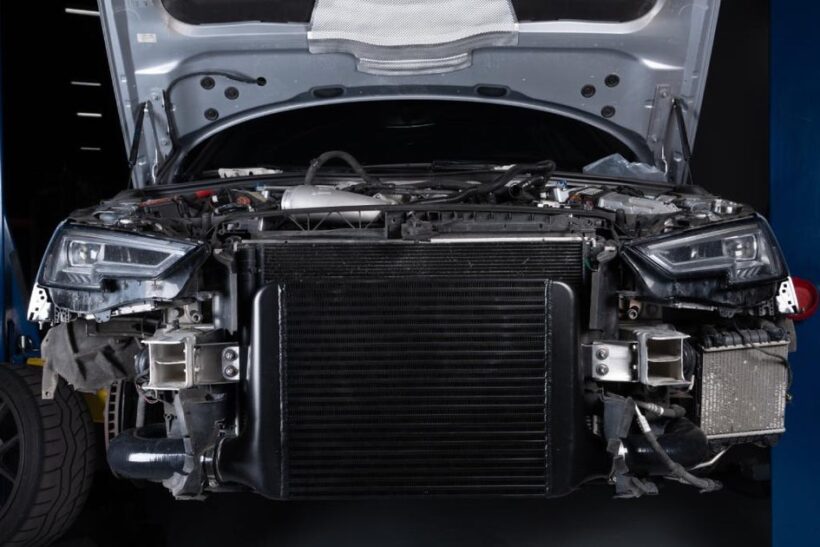
Preparation is the first step to a successful install:
- Mock up the intercooler to check fit.
- Confirm clearances to radiators, fans, and body panels.
- Measure and plan hose runs for smooth airflow.
- Make sure nothing blocks the air path to the core.
Step-by-step installation:
- Attach mounting brackets to support the intercooler’s weight.
- Secure flanges and joints with proper sealing and use a torque wrench for even force.
- Choose clamps that maintain pressure under boost but avoid damage to hoses or pipes.
Before road testing, conduct a pressure test and a leak-down check to catch potential blows or coolant leaks. Remove objects that could slow airflow, like license plates or debris, for the best cooling effect.
Sustained Power: How Intercooler Upgrades Change the Drive
Upgrading an intercooler provides several measurable benefits. Expect:
- Lower EGTs, which increase engine safety
- Flatter, more stable torque curves even under load
- Less heat soak during towing or repeated acceleration
Intercooler improvements help avoid engine stress, keep intake air cleaner, and make maintenance easier. These upgrades foster longer engine life and allow the engine to run at peak power for longer without damage.
For drivers who tow, work, or push performance, a quality intercooler investment produces strong returns in driveability and reliability day after day.
What Works Well With an Intercooler Upgrade?
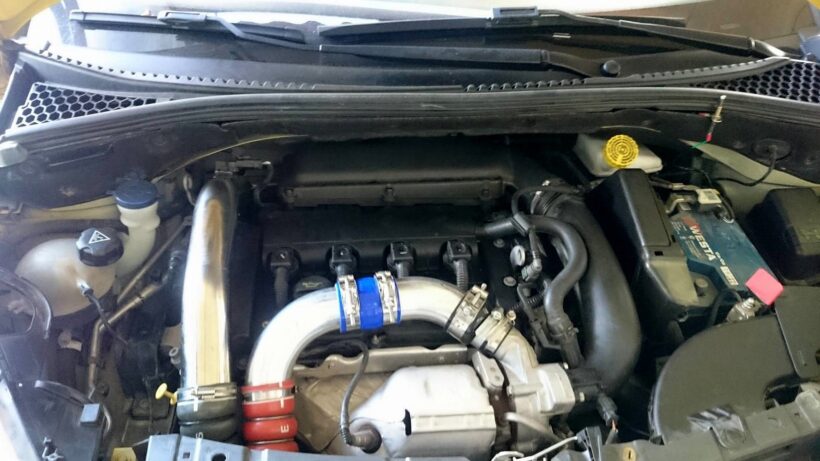
Here’s a look at the mods that naturally complement a high-performance intercooler:
- Tuned ECU or programmer: A well-calibrated tune adjusts fuel delivery, boost timing, and other engine parameters to take advantage of the cooler, denser air. Without a tune, you might not fully realize the intercooler’s potential.
- High-flow intake system: Cooler air is great, but you also want more of it. A larger or better-placed intake helps get fresh air to the turbo faster.
- Upgraded turbocharger: If you’re pushing higher boost levels, a bigger or more efficient turbo often goes hand-in-hand with a larger intercooler.
- Free-flowing exhaust: Getting air in is only half the equation. A less restrictive exhaust — especially with a larger downpipe — lets spent gases exit quickly, reducing backpressure and lowering EGTs even further.
When upgrades are matched correctly, you’re not just stacking parts — you’re building a balanced system that handles more power with less stress.
How Weather and Altitude Play Into Cooling Strategy
Here’s something not everyone thinks about: outside conditions can make or break your intercooling strategy.
- Hot climates: If you’re running your diesel in Arizona, Texas, or anywhere else summer temps soar past 100°F, you’ll get a lot more out of a large-capacity intercooler than someone in cooler regions. The system has to work harder to bring that already-hot ambient air down to a reasonable charge temp.
- High altitudes: In places like Colorado or Montana, the air’s thinner — which means less oxygen. That doesn’t just affect power output, it also affects how efficiently your intercooler can do its job. Bigger cores and efficient flow paths matter even more in these conditions.
- Stop-and-go towing vs. highway pulls: Cooling needs can also vary by driving style. Long grades at highway speeds benefit from big frontal area and sustained airflow. City towing or off-roading with low-speed airflow may see better results with air-to-water systems or auxiliary fans.
So if you’re planning an intercooler upgrade, factor in how and where you drive — it really does matter.
How to Spot an Inefficient Intercooler Before It Fails You
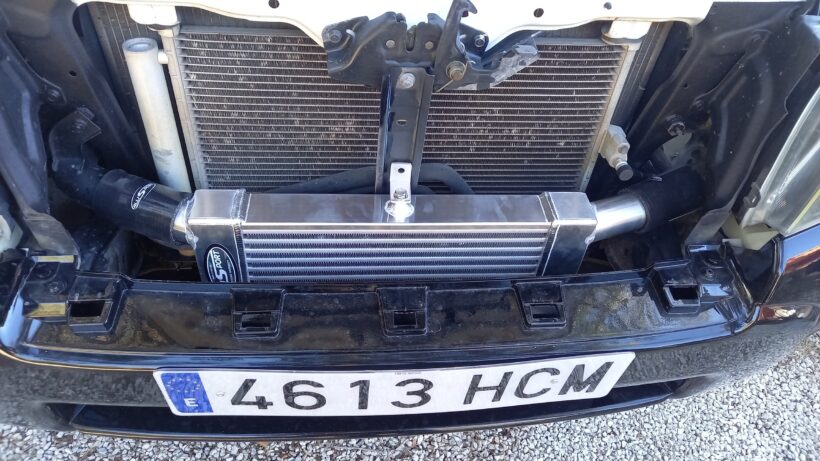
Some signs creep up slowly, and others hit hard. Keep an eye out for:
- Loss of power when hot: If your truck feels strong when cold but struggles under load, especially after repeated pulls, you could be getting heat soak.
- High EGTs without a clear cause: If your EGT gauge is always flirting with the danger zone, even with moderate throttle, the intercooler might not be pulling its weight.
- Boost lag or pressure drop: Excessive pressure loss across the core can cause slower spool or weak throttle response. Check logs or use a gauge pre- and post-intercooler to spot big drops.
- Visible oil or dirt buildup at end tanks: That could signal leaks or cracks, especially in stock plastic end tanks — common failure points under tuned conditions.
When caught early, replacing or upgrading your charge-air cooler can head off bigger problems like turbo overspeed or piston damage.
Final Thoughts
An upgraded intercooler doesn’t scream for attention the way a big turbo or aggressive tune does. But it quietly keeps your diesel consistent, especially when you need it most. Whether you’re hauling 10,000 lbs through the Rockies or climbing steep trails on a hot summer day, stable temps and torque you can count on make all the difference.
It’s peace of mind, more than anything — and that’s something every serious diesel driver can appreciate.

